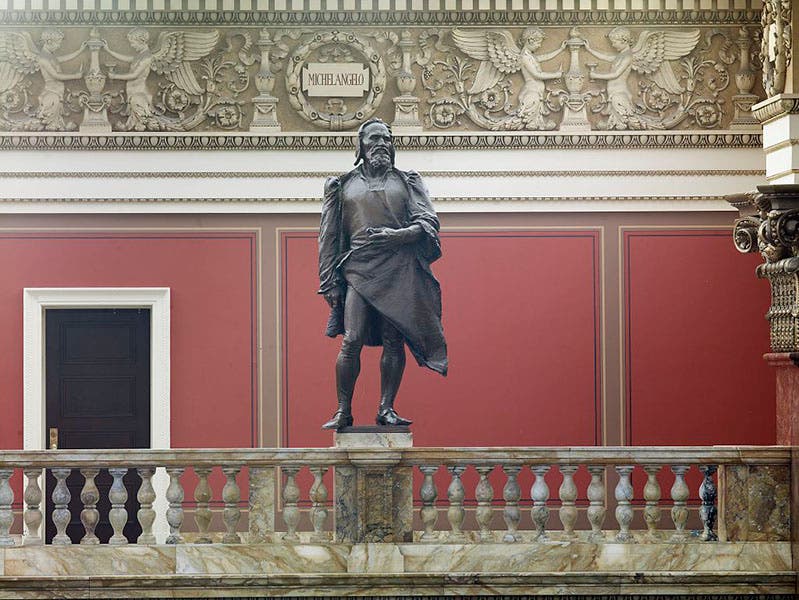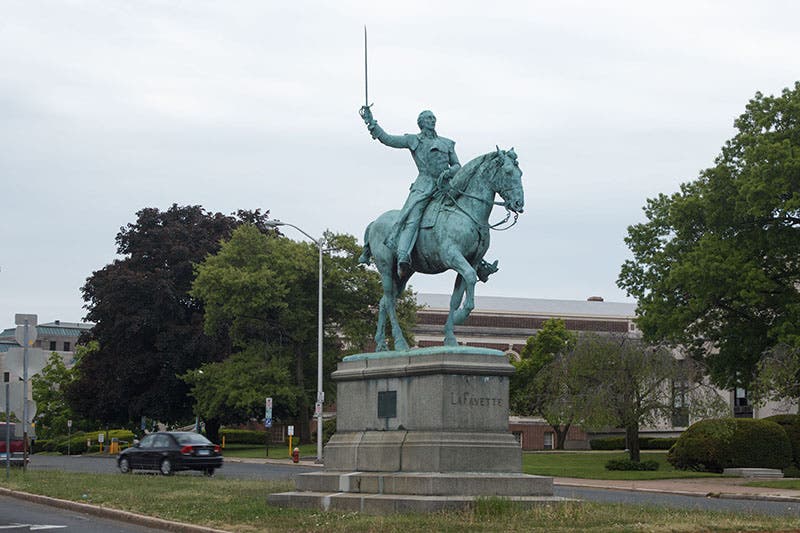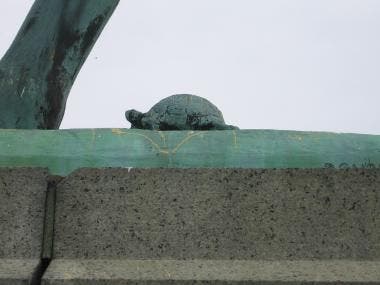Scientist of the Day - Paul Wayland Bartlett
Paul Wayland Bartlett, an American sculptor and animalier, was born Jan. 24, 1865, in New Haven. Bartlett’s family moved to France when he was young, and he had a chance to study under a variety of French sculptors, including Rodin. He later returned to the U.S. and received a number of important commissions, of which the best-known are the statue of Michelangelo on the balcony of the main reading room of the Library of Congress (third image, below), and the pediment over the east entrance to the U.S. Capitol. We showed a matching statue of Joseph Henry on the Library of Congress balcony (which Bartlett did not sculpt), in a post on Henry not too long ago..
We include Bartlett in our pantheon of scientific figures for two reasons. First, he executed portrait sculptures of two prominent scientists: Benjamin Franklin, a large bronze that sits in a square in Waterbury, Conn. (fourth image, below), and a similar statue of Alexander Agassiz, a Harvard professor of inverteberate zoology and the son of the noted zoologist Louis Agassiz, which sits in a square in Calumet, Michigan.
But an even better reason for bringing Bartlett into the fold is that he loved to sculpt animals. One of the masters he trained under in Paris was the famous animalier Emmanuel Frémiet. Frémiet liked to find artistic inspiration in the animals of the Paris zoo, and Bartlett used to go with him. While Frémiet liked to sculpt feisty animals (see for example his bronze of a gorilla carrying off a woman), Bartlett's taste ran toward more placid animals, such as the goat we show above (first image), and the baby robin (fifth image, below), both of which are in the Smithsonian Museum of American Art.
But one Bartlett animal sculpture is special, because it is emblematic (unusual for 20th-century animal sculptures) and because it comes embedded in a good story.
Bartlett was commissioned by the city of Hartford to erect a bronze version of the equestrian statue of Lafayette that he had sculpted for Paris in 1907 . He finished the statue promptly, but he had to wait until 1932 for city officials to get around to mounting it across from the Connecticut State Capitol. The story is that Bartlett grew so irritated at the delay that he added a small bronze figure of a turtle to the statue, just in front of Lafayette's horse’s left hind foot (see the two images below)
No document supports the tale, but it is probably true that the turtle is emblematic of some sort of unwelcome tardiness in getting the statue put in place (or possibly, in getting paid for his work).
I have a small collection of Alva Museum replicas, just because I like them; they are small and will fit on my desk or in my kitchen. Some years ago, I bought on eBay an Alva Museum replica of a turtle. It said on the sticker on the bottom that the original was in the Washington County Museum of Art in [!hagerstown!], Maryland. So I wrote the museum and asked them what the piece was that Alva had replicated. They responded that it was the model that Bartlett made for his Lafayette turtle and sent me a photo (ninth image, below). So if you want to see Bartlett's large turtle, head for Hartford, and if you want to see his smaller model, hie thee to Hagerstown. The Washington County Museum also has a small version in bronze by Bartlett of the complete Lafayette statue. I was pleased to see that a small turtle is in place there as well.
Dr. William B. Ashworth, Jr., Consultant for the History of Science, Linda Hall Library and Associate Professor emeritus, Department of History, University of Missouri-Kansas City. Comments or corrections are welcome; please direct to ashworthw@umkc.edu.














